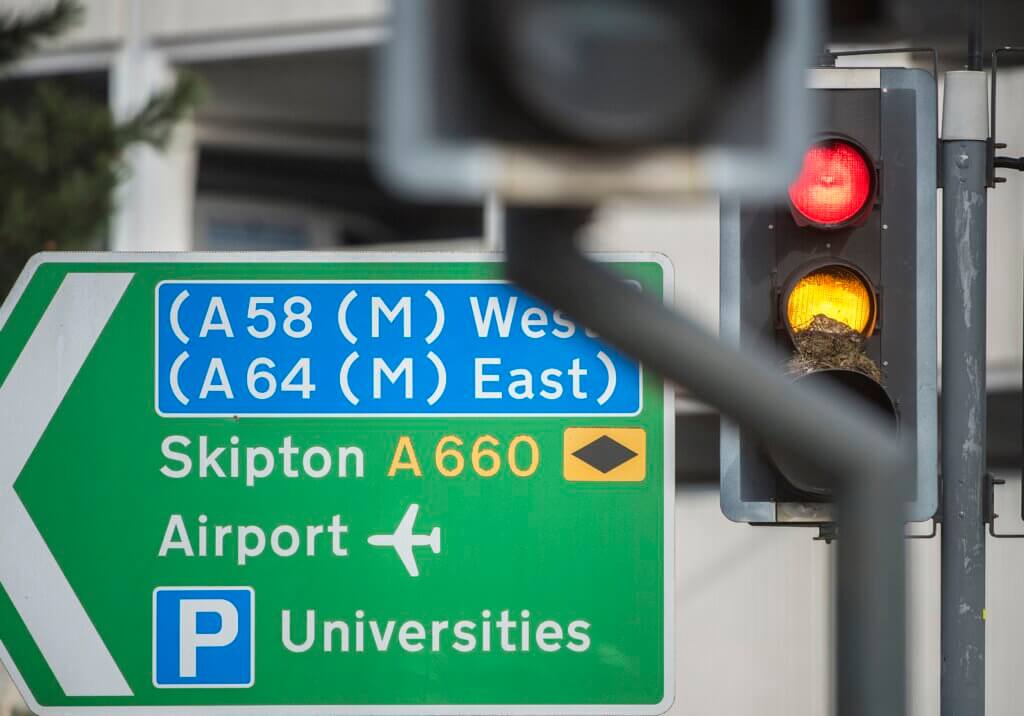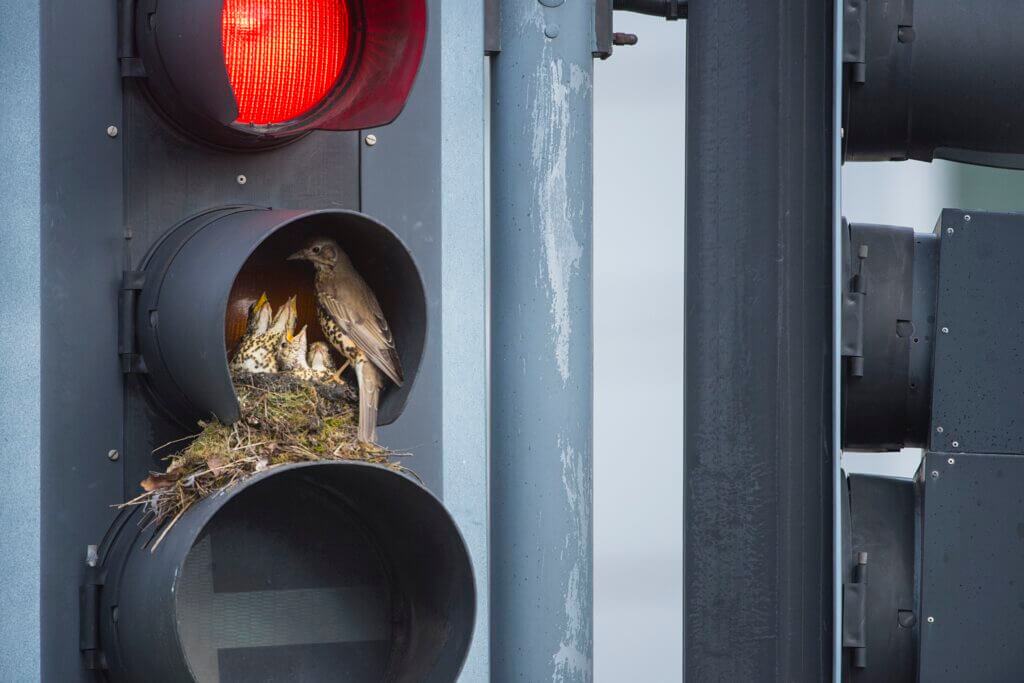
A pair of mistle thrush has set-up home and are rearing their four chicks surrounded by the hustle and bustle of Leeds city centre in front of an amber traffic light. Otherwise known as the stormcock, this species is recorded as on the UK red list. The eggs were laid as early as late-January and hatched in the middle of February during the height of storm Dennis, despite treacherous weather conditions and all four healthy chicks are set to fledge the nest. The usual breeding period for these birds start with egg laying as early as late-February, with the season continuing until the end of June; a strong indicator of how climate change is having an impact on wildlife in urban areas.

The heat from older versions of traffic lights could have attracted these birds during breeding season, as they provided shelter and warmth as well as attracting insects as sources of food at night. Newer versions of traffic lights however make use of LED’s which preserve energy and don’t give off as much heat, which don’t appear to have deterred the birds from using them for breeding and rearing their young.
RSPB Wildlife Advisor Charlotte Ambrose says: “With the weather turning dramatically for much of the UK over the winter, it’s very unusual for these birds to set-up nest in traffic lights, so this is certainly not creating a stormcock in a teacup! What’s even more bizarre is the fact that we’re seeing nesting more than a month earlier than usual as there have been unseasonably high temperatures, despite storms Ciara, Dennis and Ellen. These weather conditions are having a detrimental effect on our wildlife as eggs are being laid earlier in the year, and summer migratory visitors are arriving earlier and leaving later.
2020 is a critical year for nature and global leaders are deciding the fate of our planet later this year, based on evidence around the climate and nature emergencies we’re facing. The State of Nature report released in October showed more than 41% of UK species are in serious decline and as nature is falling silent around us, it’s never been more important that we all help give nature a home.”

More information on how you can help give nature a home, can be found at www.rspb.org.uk/homes
Ends
[registration_form]
I’d be intrigued to know whether the mistle thrushes were allowed to stay as a result of an enlightened decision that road safety was not unduly threatened by their presence on the amber light or whether funding cuts experienced by Leeds City Council simply meant that no-one was available to go and do the dirty work (or, perhaps more likely, no-one was available to do the admin work of applying for a licence to destroy the nest). Either way it is nice to see the pair successfully raising a brood and doing their bit to help the species get back off the red list.
If this is the traffic light I think it is then Mistle Thrushes have been using it almost annually for quite some years. Usually it is an early nest and it has certainly been successful on a number of occasions.
So clever. Plus i
t’s urban nature magic lighting up people’s everyday lives. But where are those pieces of litter that Mistle Thrushes often like to adorn their nests with? Perhaps they have been hidden because these shrewd parents are a bit ambervalent about them.
I can’t help thinking that as well as being on the UK Red List, maybe this particular pair should be put on the Amber List, too.
A pair of mistle thrushes nested in the same kind of site, in a traffic light cowling, two years running on the very busy A690 Durham Road in Sunderland, back in the late 1990s, and successfully fledged broods each time.